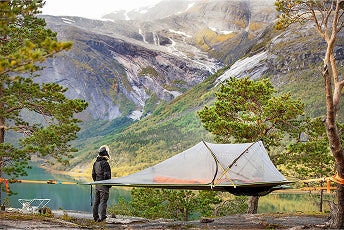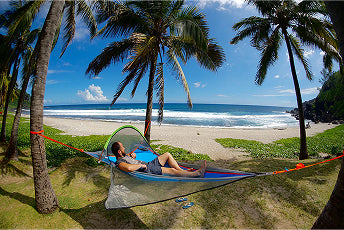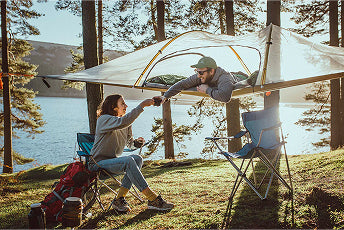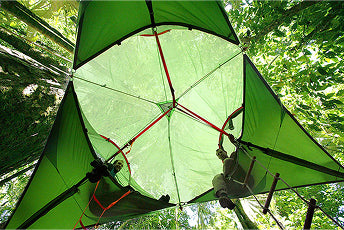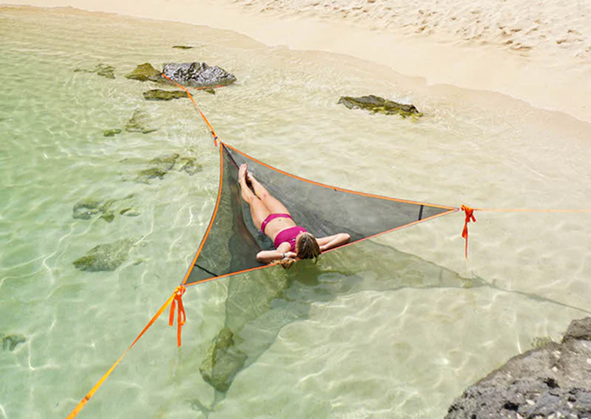Car Camping Basics
Car camping is one of the simplest and most accessible forms of camping, great for first timers and experienced outdoors enthusiasts alike. Essentially, car camping is any trip where you pack your campsite and camp close to your car, think traditional campsites, backroad parking spots, even overnight off-roading.
The beauty of car camping is you don't have to consider pack size and weight anywhere near as much as you would for a backpacking camping trip, which allows you to pack far more home comforts. Where you may only take a lightweight tent on a hiking trip, when car camping you can add extras like a gazebo, chill out hammock, large camping furniture. You name it, this is the time to really deck out your basecamp and relax.
It's always best to check out your campsite ahead of time, and plan out your adventure, but another huge benefit of car camping is that, with the right vehicle, you can use part of your car or van as an anchor point for your Tree Tent or hammock!
Anchoring with Your Car
One key thing that needs to be mentioned if you plan to use your car as an anchor point for your Tentsile tree tent or camping hammock. There needs to be a fixed and stable point on your car to wrap the strap around and maintain a large amount of tensile force. The main option is using a roof rack, and attaching the strap when the car is angled so the tension pulls at the car when the car is angled at 45 degrees. This is so you remove the chance of the car being overtired if attaching to the car from the side, and also protect your handbrake and wheels when connecting your Tentsile directly from behind or in front. Angle your car at 45 degrees to spread the pulling power across the car and prevents any accidents from happening. Just make sure your roof racks are tightly secured!
You may benefit from learning how to wrap the strap around your anchor point when the d-ring to anchor is below the minimum recommended distance and using a basket loop to get your tent right up close to your car or trees to make your pitch as compact as possible while not taking away from your elevated experience. This video will help you do that.
Tips on Camping in Campgrounds and Campsites
Reserve your camping spot months in advance, especially if you are planning to camp during peak season, particularly in summer. Arrive early to the first-come-first-serve sites to ensure you get your desired camping spot, also to make some friends early on if that’s something you’d be into.
Consider the seasons, summer is busy, but spring and mid-summer/fall may be quieter, depending on how well your tolerate other campers. Bring your own water, as many sites do not have a water source or the water is irrigation run off and therefore not consumable, however this will add a lot of weight to be mindful of what you pack and lay our your priorities!
Leave no trace, respect the local wildlife and always dispose of your trash properly. Try to leave your pitch as it was before you came, or even in a better state than previous. Pack food in air-tight containers; you can bring your own or rent from park rangers in many places. Consult tide charts if you are camping on the beach/near the saltwater shoreline.

